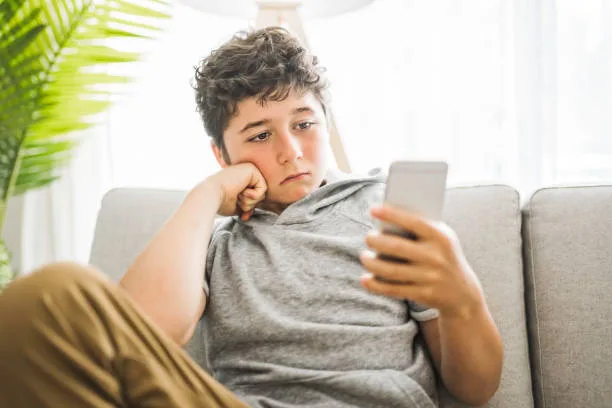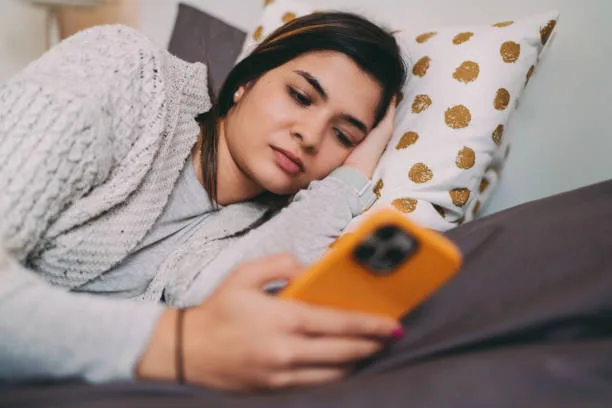In today’s digital age, cell phones have become an integral part of our daily lives. From communication to entertainment, these devices offer a multitude of benefits. However, there is growing concern about the impact of excessive smartphone usage on the mental well-being of the young generation. Are cell phones responsible for the rise in depression and loneliness among youth? Let’s delve into this complex issue and explore some compelling insights, including unconventional perspectives and real-life examples.
The Paradox of Connectivity and Isolation
On the surface, smartphones are hailed as tools for improving connectivity and fostering social interactions. Social media platforms enable young people to stay connected with friends and family, irrespective of physical distance. However, the paradox lies in how excessive use of social media and smartphones can lead to isolation and disconnection. Research has shown that prolonged exposure to idealized portrayals of life on social media can contribute to feelings of inadequacy and loneliness. A study conducted at the University of Pennsylvania revealed that reducing social media use to just 30 minutes a day led to significant reductions in feelings of loneliness and depression.

The Distractive Nature of Cell Phones
In addition to the social aspects, the constant availability of smartphones has led to a culture of distraction. In social settings, the temptation to constantly check notifications and messages can detract from meaningful face-to-face interactions. This behavior can create a sense of disconnect and hinder the development of deep, genuine connections. Take the example of Sarah, a college student who found herself feeling increasingly isolated despite being constantly connected online. It wasn’t until she intentionally limited her smartphone usage during social gatherings that she noticed a positive shift in her mood and the quality of her interactions.
A Call for Mindful Tech Consumption
In addressing the relationship between cell phones and mental health, the emphasis should be on mindful and intentional use of technology. Encouraging young people to cultivate a healthy digital diet, prioritize offline interactions, and engage in activities that promote well-being are essential steps. By fostering a culture of digital well-being and mindfulness, we can empower the young generation to harness the benefits of technology while safeguarding their mental and emotional health.
Cell phones were designed to bring people closer, bridge distances, and make connections easier. Ironically, the same devices intended to enhance our social lives may be contributing to a sense of loneliness and isolation among youth. A study conducted by the Pew Research Center found that while 95% of teens own a smartphone, 24% feel they are “almost constantly” online, leading to concerns about the potential adverse effects on their mental well-being.
Digital Detox and Genuine Connections
Amidst concerns about the impact of smartphones on mental health, a counter-movement has emerged – the concept of digital detox. Many young people are seeking ways to strike a balance between staying connected digitally and engaging in meaningful, in-person interactions. Whether it’s participating in device-free weekends or organizing digital detox challenges with friends, these initiatives are aimed at cultivating authentic connections and reducing reliance on smartphones.
Seeking Support and Building Resilience
It’s essential to recognize that while smartphones can contribute to feelings of depression and loneliness, they are not the sole culprits. The underlying causes of mental health challenges are multifaceted and require holistic approaches to addressing them. It’s crucial for young individuals to seek support from trusted adults, mental health professionals, and peer support groups. Building resilience and coping mechanisms to navigate the complexities of modern life, including digital influences, is paramount.
The Instagram Illusion:
Social media platforms, often accessed through mobile devices, have become a double-edged sword. On the one hand, they allow individuals to showcase their lives, achievements, and experiences. On the other hand, this curated online existence can contribute to feelings of inadequacy and low self-esteem. Consider the case of Sarah, a high school student, whose constant exposure to her peers’ seemingly perfect lives on Instagram led to a distorted self-image and a spiraling sense of loneliness.

Nomophobia and Fear of Missing Out (FOMO):
Nomophobia, the fear of being without one’s mobile phone, is on the rise among the youth. This constant need to stay connected can lead to anxiety, affecting mental health. Additionally, the Fear of Missing Out (FOMO) – driven by the constant stream of updates and notifications, can create a sense of inadequacy and exclusion. Jake, a college student, found himself attending social events not out of genuine interest but to avoid the anxiety of missing out on potential experiences shared by his peers.
Digital Communication vs. Face-to-Face Interaction:
While cell phones facilitate communication, they often replace face-to-face interaction. Research indicates that excessive screen time can hinder the development of essential social skills. Emma, a teenager, observed a decline in her ability to engage in meaningful conversations, leading to a sense of isolation despite being constantly connected virtually.
Breaking the Mold: Unconventional Solutions;
To address the issues of depression and loneliness associated with cell phone usage, unconventional solutions are needed. Initiatives like “Digital Detox Days” in schools and colleges encourage students to disconnect from their devices periodically. Creative endeavors, such as community art projects or workshops, can foster real-life connections and reduce dependence on virtual interactions.
Strategies to address the issue of depression and loneliness associated with cell phone usage
- Digital Detox Days:
- Implement periodic “Digital Detox Days” in educational institutions or workplaces where individuals are encouraged to disconnect from their devices.
- Use these days to promote face-to-face interactions, outdoor activities, and community-building exercises.
- Offline Social Events:
- Organize offline social events and activities that bring people together without the distraction of smartphones.
- Community art projects, board game nights, or outdoor sports can provide avenues for genuine connections.
- Mindful Smartphone Use Programs:
- Introduce mindfulness programs that teach individuals how to use their smartphones more consciously.
- Techniques such as meditation, digital mindfulness, or time management strategies can help in reducing anxiety associated with constant connectivity.
- Tech-Free Zones:
- Designate specific areas or times as “tech-free zones” where cell phones are not allowed.
- This can be applied in public spaces, schools, or even within households during family meals to encourage more meaningful interactions.
- Creative Workshops:
- Organize creative workshops and classes that encourage individuals to explore hobbies and interests outside of the digital realm.
- This could include art, music, dance, or other activities that promote personal expression and connection with others.
- Community Service Projects:
- Engage the youth in community service projects that require collaboration and teamwork.
- Working towards a common goal in the real world fosters a sense of purpose and belonging, mitigating feelings of isolation.
- Peer Support Groups:
- Establish peer support groups within schools or communities where individuals can openly discuss their experiences with cell phone usage and its impact on mental health.
- Encourage empathy, understanding, and the sharing of coping strategies.
- Educational Programs on Social Media Literacy:
- Implement educational programs that focus on social media literacy to help individuals navigate online spaces more thoughtfully.
- Teach critical thinking skills and resilience against the negative aspects of social media comparison.
- Tech-Free Retreats:
- Organize retreats or camps where participants are required to abstain from using their smartphones.
- These retreats can provide opportunities for self-reflection, mindfulness activities, and building connections without digital distractions.
- Artificial Intelligence for Well-Being:
- Explore the use of artificial intelligence (AI) tools that promote mental well-being by monitoring and providing insights into smartphone usage patterns.
- AI applications can offer personalized recommendations for healthier digital habits based on individual needs.

By incorporating these unconventional strategies, it’s possible to address the issue of depression and loneliness associated with cell phone usage, fostering a healthier balance between virtual and real-world experiences.
Conclusion:
While cell phones undoubtedly bring numerous advantages, it’s crucial to acknowledge and address the potential negative impacts on mental health, particularly among the young generation. By understanding the paradox of connectivity, the influence of social media, and the importance of face-to-face interactions, we can work towards creating a healthier relationship with technology. Striking a balance between the virtual and the real world is key to ensuring that cell phones enhance rather than hinder the well-being of youth.
Also, by acknowledging the nuanced interplay between technology and mental well-being, we can take proactive steps to mitigate the negative impacts and foster a healthier relationship with digital devices. Let’s strive to create a future where technology enriches our lives without compromising our happiness and sense of belonging.
Note: Contact our Writers at www.eastsidewriters.com for writing Blogs/Articles on any niche. We have experts in various domains, from Technology to Finance and from Spirituality to Lifestyle and Entertainment.






